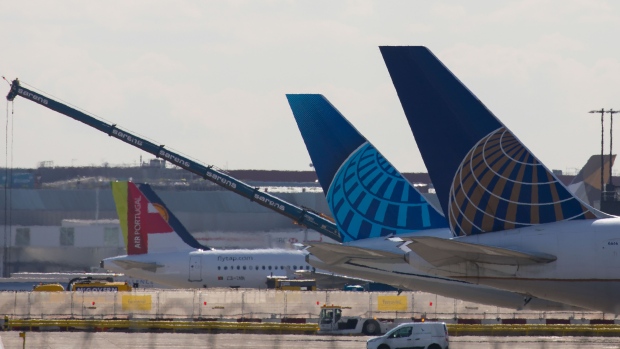May 19, 2020
U.S. airlines see signs of life after April travel collapse
, Bloomberg News

U.S. airlines reported signs that travel demand is perking up, suggesting the beginnings of a rebound from an unprecedented collapse because of the coronavirus pandemic.
Bookings are again outpacing cancellations and June reservations are showing “modest improvement,” Southwest Airlines Co. said Tuesday. United Airlines Holdings Inc. is seeing reduced cancellation rates and “moderate” strengthening on U.S. and some international routes. Delta Air Lines Inc. has noticed a slight bounce in leisure bookings, and American Airlines Group Inc. said it’s filling a greater portion of seats on its planes.
The nascent signs of recovery bolstered the outlook for at least a tentative comeback after consumers all but stopped flying in April because of the virus outbreak and government travel restrictions. Carriers cautioned that the landscape remains uncertain for an industry that has already received US$25 billion in government payroll aid during the worst crisis in airline history.
A Standard & Poor’s index of major U.S. airlines was little changed at the close in New York, a day after a 14 per cent surge amid a broad rally spurred by positive news about an experimental coronavirus vaccine. Southwest gained 2.2 per cent to US$27.69 in the Tuesday session. The others fell, paced by American’s 2.3 per cent drop to US$9.64.
HAVE YOUR SAY

Do you think the federal government should have emergency aid specifically for airlines?
Filling Seats
Southwest said in a regulatory filing that operating revenue this month would likely decline no more than 90 per cent from a year ago, slightly better than the previous forecast of a drop of as much as 95 per cent.
The percentage of seats filled per plane in May should average between 25 per cent and 30 per cent, compared with about 8 per cent in April. The Dallas-based carrier earlier projected the figure would be no more than 10 per cent in May. The forecast for capacity remains down as much as 70 per cent from last year’s level.
Southwest also issued its first outlook for June, forecasting that operating revenue would drop as much as 85 per cent and that capacity would decline as much as 55 per cent. With fewer planes flying, its number of seats filled was projected to be 35 per cent to 45 per cent.
The airline also is starting to get a grasp on spending, projecting it would burn US$25 million a day on average this quarter, down from an earlier estimate approaching US$35 million. With cash use in the low US$20 million range, as it this month, Southwest said it would take about 20 months before its US$13 billion in cash and short-term investments would be depleted.
‘We’re Cautious’
Delta has seen a “little bit” of a bounce off the bottom, including an uptick in domestic leisure bookings and occasional days of positive sales, net of refunds, Chief Financial Officer Paul Jacobson said. But he cautioned that reservations must still translate into actual travel. Leisure traffic, such as the beach destinations Delta is booking, typically is less solid and less profitable than business travel.
“We’re cautious. We really can’t afford to have false starts,” Jacobson said at a Wolfe Research conference. “That’s going to be a challenge for the industry: How we restart in the face of demand that’s going to bounce around a little bit.”
The airline expects to reduce daily cash burn to US$40 million as June winds down and is on track to reach zero by year-end, Jacobson said.
Delta said Monday it would restart a variety of flights in June, including on such routes as New York to Paris and Atlanta to Cancun, providing a hint that demand is poised to inch up.
United expects to operate about 25 per cent of its 2019 schedule in July, up from about 12 per cent in May, and “we’re now seeing a lot of this starting to stabilize” in terms of bookings outpacing cancellations, Chief Commercial Officer Andrew Nocella said Tuesday in a webcast with Wolfe analyst Hunter Keay.
The carrier is being “very careful” with its revenue-management strategies for later in the year and early 2021 and not pricing simply “to fill up airplanes,” Nocella said. “Our pricing philosophy really hasn’t changed that much,” he said.
American is filling about 35 per cent of its seats this month, up from 15 per cent in April, said Don Casey, the carrier’s senior vice president of revenue. Business travelers not managed by corporate programs already are returning to flying, he said.